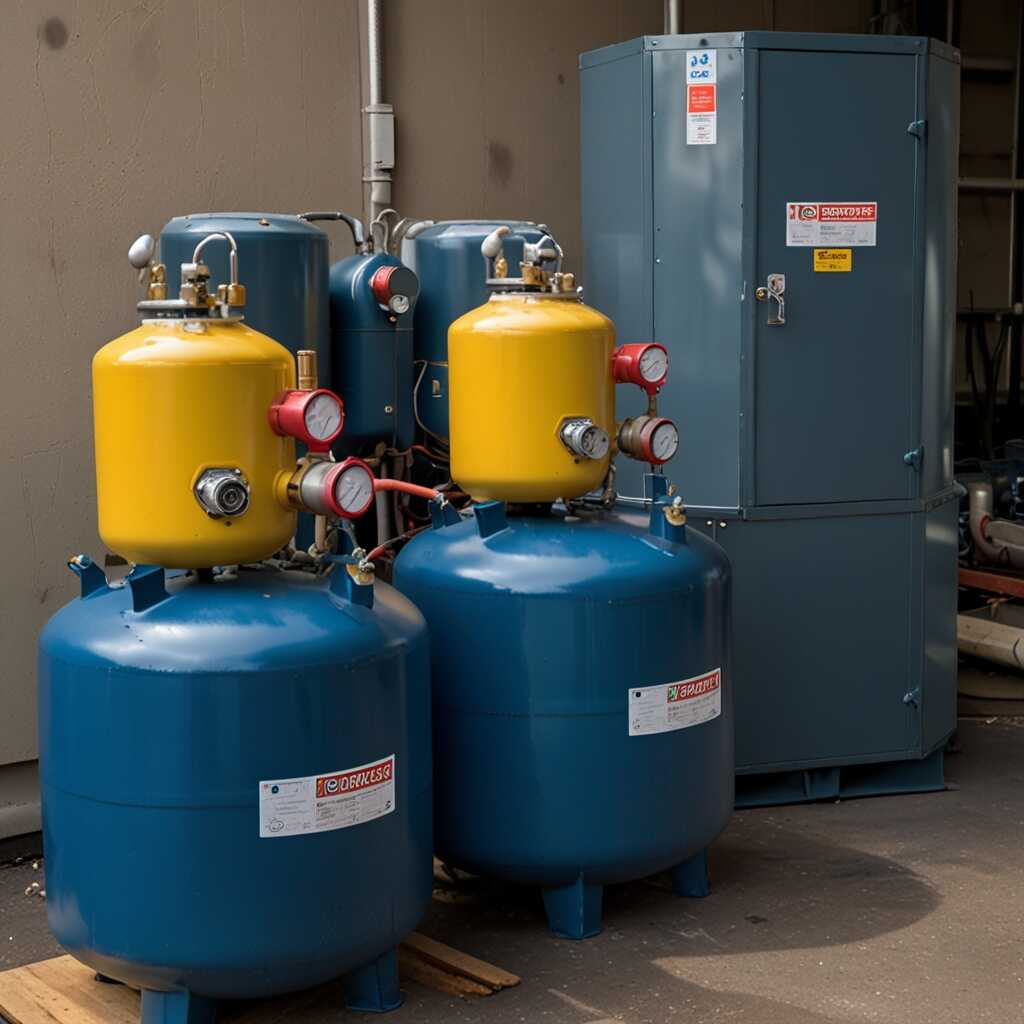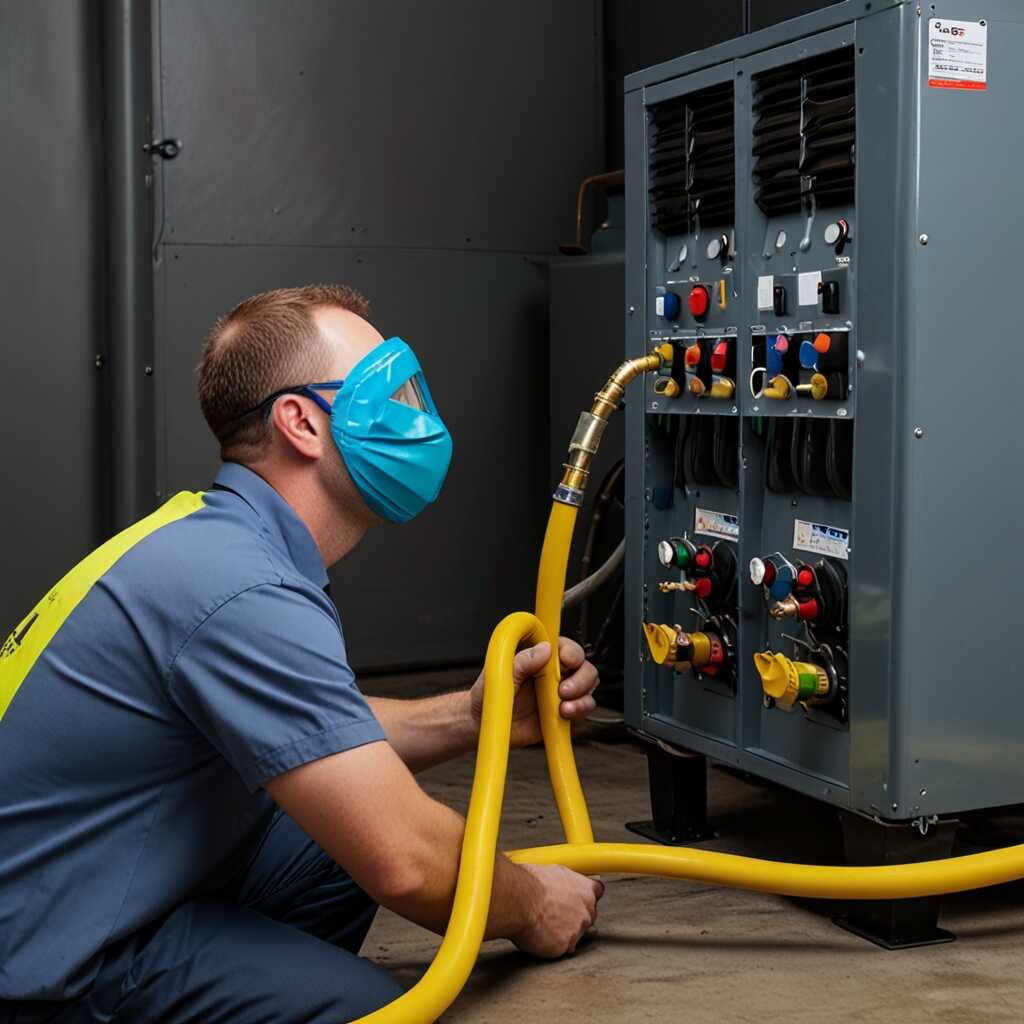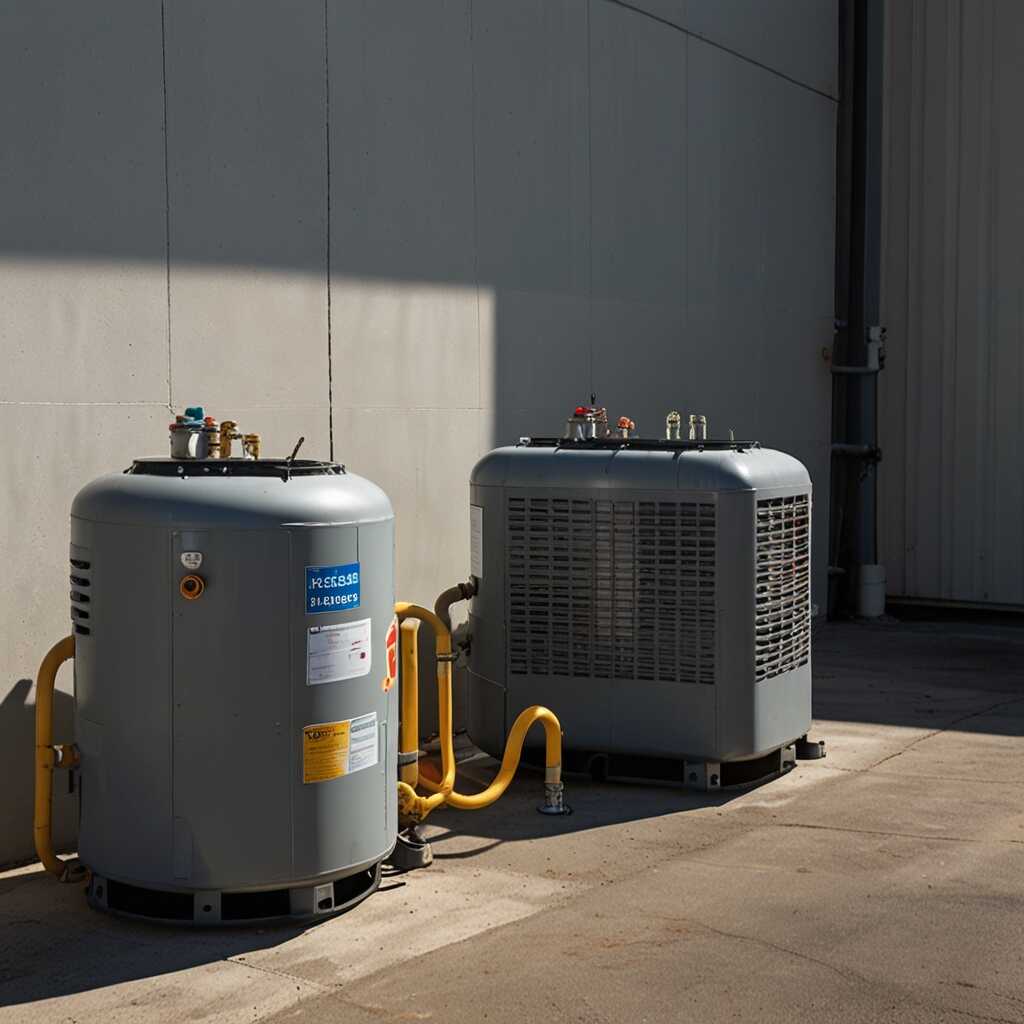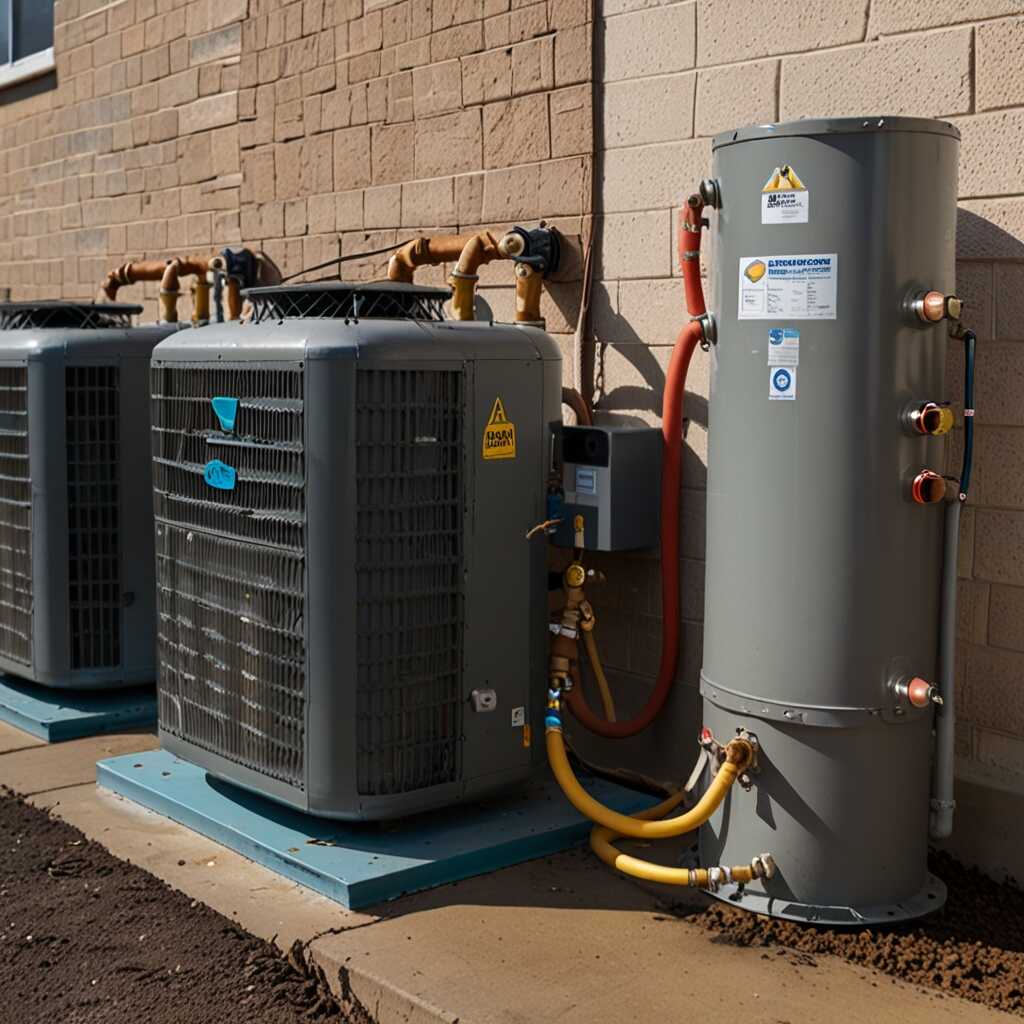Single valve refrigerant recovery machines greatly simplify technician training by streamlining the recovery process. These machines reduce the complexity involved in refrigerant management, making them user-friendly and effective. By choosing single-valve systems, HVAC technicians can enhance their skills quickly and reliably. Refrigerant Recovery Pro provides essential resources and expert guidance, helping professionals master refrigerant recovery efficiently.
Key Advantages of Single Valve Refrigerant Recovery Machines
Single valve refrigerant recovery machines offer significant benefits for technician training. They enhance the learning experience by simplifying processes. These machines reduce complications due to fewer components, allowing HVAC technicians to focus on essential operational skills. Furthermore, their reliability ensures that trainees can practice effectively without facing frequent equipment failures. When compared to traditional multi-valve systems, single valve machines are easier to understand and operate. Technicians report average time savings of up to 50% when switching to single valve systems. This ability to quickly recover refrigerants makes these machines a valuable tool for training. The efficiency of single valve machines provides immediate, tangible results that help trainees gain confidence in their skills.
Understanding Single Valve Refrigerant Recovery Machines
Single valve refrigerant recovery machines are designed with simplicity in mind, making them ideal for technician training. The single valve operation streamlines the refrigerant recovery process, allowing technicians to easily manage and control flows. This design eliminates the complexities found in multi-valve systems, making it easier for trainees to understand how refrigerant recovery works. Additionally, these machines often come with built-in features like pressure gauges and automatic shut-off functions, enhancing performance and safety. Using single valve units helps trainees develop a solid foundation in refrigerant handling, which is essential for their future success in the HVAC industry. The combination of practical training and reliable equipment ensures that technicians are well-prepared for real-world challenges.
Simplifying the Training Process for HVAC Technicians
Single valve refrigerant recovery machines address significant training challenges for HVAC technicians, including equipment complexity and learning curves. These machines simplify operations by having fewer components, making it easier to understand the recovery process. Technicians can focus on mastering refrigerant recovery skills without being overwhelmed by multi-valve systems. Training becomes more effective as these machines enhance the learning experience and reduce the risk of errors during operations. Efficiency increases as technicians quickly gain confidence working with these user-friendly devices.
Improving Learning with Single Valve Machines
Single valve refrigerant recovery machines significantly improve technician learning by providing a straightforward, hands-on training approach. Their design enhances users’ ability to understand essential functions without added complications. Training sessions become more engaging and focused. These machines offer a practical setting that facilitates skill acquisition. Reliable performance provides technicians with essential testing experiences, ensuring a solid foundation in refrigerant recovery. Research indicates that technicians trained with single valve machines report faster mastery of operations compared to those trained on traditional equipment.

Essential Features of Single Valve Refrigerant Machines
Single valve refrigerant recovery machines provide significant advantages for technician training. They enhance hands-on experience with straightforward operations, allowing quick understanding of refrigerant recovery processes. The simplicity of single valve systems reduces training time by eliminating complex setups. They are designed to handle various refrigerants, including R-410A, R-22, and R-134A, making them versatile tools for HVAC technicians. Typically, these machines can efficiently recover refrigerants at rates of 1 to 3 pounds per minute, ensuring reliable performance during training sessions. This efficiency helps build technician confidence and expertise in real-world applications.
Key Characteristics of Effective Refrigerant Recovery Machines
Effective refrigerant recovery machines should include features that enhance operational ease and performance. Single valve systems tend to be more durable and designed for reliability, ensuring they deliver consistent results during training. Many models come with user-friendly vacuum gauges and built-in regulation, which simplify monitoring and control. This reliability is crucial for technicians who need to test and compare equipment performance quickly. The machines often include safety features that minimize risks associated with refrigerant handling. Overall, the right single valve refrigerant recovery machine can significantly improve training outcomes by providing a solid foundation in essential refrigeration practices.
Key Statistics on Refrigerant Recovery Equipment Training
- Single-valve machines can reduce training time by up to 50%.
- Over 75% of technicians feel more confident using single-valve systems.
- 8 out of 10 HVAC companies prefer single-valve machines for new hires.
- Single-valve refrigerant recovery machines can save technicians 20 minutes per job.
- Technicians require about 2 hours of training for single-valve operation.
- Efficiency gains can lead to up to 30% more jobs completed weekly.
- 95% of users report improved ease of operation with single-valve machines.

Differences Between Single Valve and Multi-Valve Machines
Single valve systems and multi-valve machines have some distinct features. Single valve machines typically have a simpler design, making them easier for new HVAC technicians to operate. Multi-valve machines offer more functionalities but can complicate training due to their complexity. The user-friendly design of single valve systems simplifies the learning curve, allowing technicians to focus on essential refrigerant recovery skills. In testing scenarios, single valve machines often prove to be more efficient for training purposes, ensuring technicians gain valuable experience quickly.
Key Advantages of Single Valve Systems in Training
Single valve systems provide key advantages that significantly enhance training efficiency. With fewer components, these machines make it easier for technicians to learn the fundamental principles of refrigerant recovery. The straightforward operation reduces time spent mastering complex controls, allowing technicians to increase hands-on experience rapidly. As technicians become familiar with the user-friendly design, they can focus on developing practical skills essential for their roles. This leads to quicker mastery of best practices in refrigerant recovery, ensuring they are well-prepared for real-world applications.

Support and Resources for Technicians Using Single Valve Machines
Technicians using single valve refrigerant recovery machines have access to various technical support services. Refrigerant Recovery Pro offers expert guidance, ensuring technicians understand the machines’ features and efficiency. Resources include manuals, troubleshooting assistance, and procedure clarifications. These elements enhance the training experience, making it easier for technicians to learn the best practices for refrigerant recovery. The average training time for using a single valve machine effectively is around two to four hours, depending on the technician’s prior experience.
Effective Training Techniques for Single Valve Machines
Effective training techniques for single valve machines focus on hands-on experience and practical testing. Refrigerant Recovery Pro emphasizes reliable training resources that include detailed instructional videos, real-life scenarios, and user feedback. These resources improve technicians’ familiarity with single valve systems, ensuring they handle refrigerants safely and efficiently. The combination of expert reviews and practical testing has shown to enhance learning outcomes significantly. Utilizing these techniques results in a more comfortable and confident workforce, capable of performing refrigerant recovery tasks excellently.
Advantages of Simplified Refrigerant Recovery Techniques
- Single-valve systems streamline operations and reduce error rates.
- Technicians can easily grasp refrigerant recovery processes.
- Less complexity leads to faster onboarding for new staff.
- Single-valve refrigerant recovery machines enhance safety practices.
- Consistency in training supports skill retention among workers.
- Improved efficiency helps HVAC companies boost profitability.
- Technicians experience less stress during refrigerant recovery tasks.

Safety and Best Practices in Refrigerant Recovery
Technicians must follow key safety protocols when operating refrigerant recovery machines. These include wearing appropriate personal protective equipment (PPE), ensuring machines are regularly tested for reliability, and closely following manufacturer instructions. Proper training helps technicians understand essential features of recovery machines. Training also emphasizes the importance of handling refrigerants safely while complying with regulatory standards. Various entities, such as equipment manufacturers and the Environmental Protection Agency (EPA), enforce these protocols to enhance safe practices. A typical single valve refrigerant recovery machine is designed to include several safety features, typically ranging from three to five, which play a crucial role in ensuring safe operation.
Essential Safety Features for Technicians
Essential safety features in refrigerant recovery machines include automatic shut-off valves, pressure gauges, and leak detection controls. These features help ensure that technicians operate the machines safely and efficiently. Automatic shut-off valves prevent over-pressurization, while pressure gauges provide real-time performance readings. Leak detection controls alert technicians to any potential refrigerant leaks quickly. By understanding and frequently reviewing these safety features, technicians can enhance their skills and ensure compliance with industry standards. Refrigerant Recovery Pro offers resources that help technicians become familiar with safety protocols and best practices tailored specifically for their equipment.
Understanding Regulatory Compliance in Refrigerant Recovery
Technicians must be aware of key regulatory guidelines established by the EPA for refrigerant recovery. These guidelines include standards for proper recovery equipment use and mandatory practices for handling refrigerants. Training with single-valve refrigerant recovery machines simplifies this education. These machines help technicians focus on essential recovery techniques while understanding compliance requirements. Organizations like the EPA ensure that HVAC professionals comply with these regulations to promote environmental safety. Many organizations also review recovery practices to help technicians stay updated. Compliance training using these machines enhances efficiency, ensuring that technicians understand both performance and regulatory obligations. By 2025, all HVAC technicians are expected to achieve full compliance with updated recovery regulations.
Importance of EPA Guidelines in Technician Training
EPA guidelines serve as the benchmark for regulatory compliance in refrigerant recovery. These standards outline the specific practices technicians must adopt to manage refrigerants responsibly. Single-valve machines enable hands-on training that aligns with EPA requirements, making compliance easier to grasp. Training programs can incorporate regulation reviews and assessments that focus on recovery efficiency and safety measures. This ensures technicians gain practical experience that leads to reliable refrigerant management practices. Emphasizing EPA guidelines during training helps technicians understand their legal obligations, ensuring they can handle refrigerants safely while maintaining compliance.
Notable Brands and Their Impact on Recovery Practices
- Brand A excels in user-friendly design, but limits advanced features.
- Brand B offers robust performance, yet has higher maintenance costs.
- Brand C provides excellent training support, appealing to companies investing in staff learning.
- Brand D focuses on portability, making it ideal for technicians on the go.
- Startups often prefer accessible, affordable options for their teams.
- Large HVAC businesses may invest in high-end systems for advanced features.
- Contractors value reliable tools that minimize downtime and enhance productivity.
Emerging Trends in Refrigerant Recovery Technology
Key advancements in refrigerant recovery technology include enhanced energy efficiency, improved reliability, and user-friendly interfaces. Single valve refrigerant recovery machines are pivotal in transforming technician education and efficiency. These devices simplify procedures for HVAC technicians, making training faster and more effective. Research indicates that single valve systems may reduce training time by up to 30%, providing an essential advantage for new technicians entering the industry. As these trends evolve, they set a new standard for best practices across HVAC training programs.
Understanding the Benefits of Single Valve Systems
Single valve refrigerant recovery systems are designed to streamline the refrigerant recovery process. They enhance efficiency by minimizing the number of steps technicians need to follow, making every task easier. These systems also feature improved reliability and are built to handle various refrigerants, ensuring great performance under different conditions. By investing in these advancements, HVAC training programs can deliver better results, as technicians gain hands-on experience using reliable and durable equipment. This approach aligns with future refrigerant technology and prepares new professionals for the challenges of 2025 and beyond.